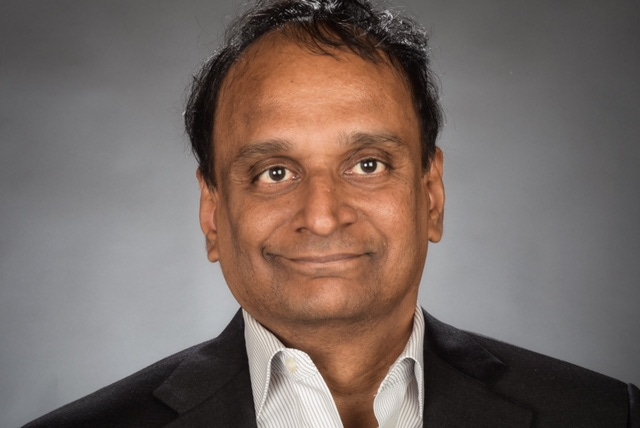A Better AI Tool for Diagnosing & Assessing Autism
EarliTec's CTO shares how the company’s autism diagnostic and assessment technology makes diagnosing autism easier for clinicians and families while avoiding common AI pitfalls.

At a Glance
- EarliTec's technology employs eye-tracking technology and digital biomarkers.
- The company has raised $21.5 million in a Series B financing.
- EarliTec is working with FDA to secure future indications for use, including in older children with autism.
All signs point to a promising future for EarliTec Diagnostics’ EarliPoint Evaluation, a device that helps clinicians diagnose and assess autism in toddlers.
The company announced earlier this month that it raised $21.5 million in Series B financing. FDA authorized EarliPoint in June 2022 and June 2023 (second-generation device) as an objective measurement tool that assists experts or trained clinicians in the diagnosis and assessment of autism in children aged 16 months to 30 months. And there is a great need for this first-of-its-kind technology, which can accurately and quickly help to diagnose autism.
Current assessment methods, including observation of these children, take hours and parents often have to wait months or longer to get the diagnosis. This is while autism cases continue to rise. As of 2020, about one in 36 children had autism spectrum disorder, compared to one in 44 in 2018, according to the Centers for Disease Control and Prevention.
What Makes EarliPoint Different?
Diagnosing autism is extensive and exhaustive, said Sreeni Narayanan, EarliTec CTO, and father to a child with autism.
Today’s gold standard for autism diagnosis typically involves hours of behavioral observation, child and parent interviews, and standardized assessments of cognitive and language skills. All of this is by highly trained specialists, who are in short supply, said Narayanan.
“For decades, the diagnosis of autism has been limited by the use of the legacy tools and a lack of innovation hampering development,” he said.
EarliPoint is a tablet-based technology, with which children watch curated scenes of social interactions.
“The embedded eye-tracking technology measures more than 120 focal preferences per second. So, we are not tracking the eyes of the child or capturing whether the child is making eye contact. What we are getting is what the child is seeing through his or her eyes,” Narayanan said. “We are seeing what the child is seeing and where the child is missing out—the nuances of this social interaction.”
The technology uses a digital biomarker to track how a child watches and focuses on the short videos, indicating whether or not the child has autism.
Last year, the Journal of the American Medical Association (JAMA) published positive results from a phase III trial demonstrating that EarliPoint could effectively and accurately aid in diagnosing and assessing autism in children as young as 16 to 30 months old. The pivotal trial’s main findings were published in JAMA. Feasibility trial results were published simultaneously in JAMA Network Open.
The research demonstrates that the moment-by-moment looking behavior of a child is a robust biomarker and predictor of autism and core autism characteristics of social disability, verbal ability, and nonverbal learning, Narayanan said.
“Then using our patented algorithms, these data are compared to the age-expected reference metrics to determine if the child is missing key moments of social learning,” Narayanan said.
The data collection process is about 12 minutes, which includes 10 minutes of the child watching the curated scenes.
Clinicians administering EarliPoint get a report post-analysis that proxies an expert clinician diagnosis, meant not to replace but rather assist clinicians. The clinician might still run traditional tests but having EarliPoint should make the process not only more accurate but also more efficient, Narayanan said.
Overcoming challenges
Collected data runs on EarliTec’s proprietary artificial intelligence (AI) models, which the company built on explainable or interpretable AI. That avoids the “black box” model--where one cannot track how the model arrives at a conclusion or outcome. That leads to skepticism, Narayanan said.
“The inner workings of our model are interpretable at every stage and the decisions made by the model are very explainable,” he said.
In another important step toward legitimacy in the marketplace, Narayanan and colleagues created a discovery and replication cohort. Replication is the key in healthcare, he said.
“Unless there is replication, it is very hard to pull the data and to develop the tool and ask the public to use that tool,” Narayanan said. “The discovery cohort is where the initial patterns are detected, and the replication cohort is where the generalization of that pattern is tested.”
A third key step: reducing or eliminating bias.
“We need data trained on very diverse datasets. … we used roughly 1100 patients for the discovery and replication cohorts [719 in a discovery study and 370 in a replication study]. This helped to create total transparency of our model that minimizes biases,” he said.
About a dozen EarliPoint devices are in use around the U.S. today, and the company is in talks with other clinics and practices.
"The model cannot learn as we are deploying the model. That is a complete no-no,” he said.
Real-world data from customers who agree to share their information would be used to optimize future releases of the model after being validated with a separate replication cohort, Narayanan explained.
EarliTec is working with FDA on future indications for use, including in older children with autism.
About the Author(s)
You May Also Like


.png?width=300&auto=webp&quality=80&disable=upscale)